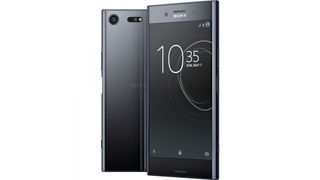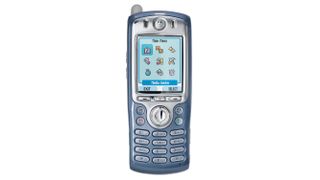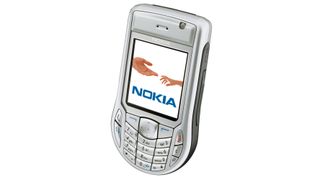
It’s impossible to look at a smartphone today and imagine what it would be like without a data connection. Without bytes streaming into our touchscreen pals, they’d be pointlessly powerful lumps of plastic, glass and metal, fit for nothing more than calling, texting and listening to the music we side-loaded from our computers.
Thankfully we have the power to slingshot reams of data into our phones, which began with the advent of 3G at the start of the century.
Remember those days? When whispered talk of video calling and internet browsing on a mobile phone became real in 2003, when the network 3 brought phones like the Motorola A830, NEC e606 and NEC e808 into our lives?

Some of these phones relied so heavily on video calling a way of selling them over the reams of Nokia phones bandied about that they were even sold as ‘buy one, get one free’ - but let’s look at the tech specs to get a flavour of how bad it was back then.
We’re talking phones that have a resolution of 162 x 132 pixels, which is far less than most average smartwatches these days. And they could download files (including MP3s, if you could find them) at a maximum of 384Kbps - there was no streaming on offer then, as it would have been a stuttery mess, a few snatched chords every minute or so.
That’s not a speed you want to experience these days… let’s just say that Spotify wouldn’t have worked on these phones in any way, let alone a touch of Netflix.
Nok-ing at the door

But move forward a year or two and the bigger names got involved with the data revolution: the Nokia 6630 was the first from the Finnish then-powerhouse. It brought with it a ‘high-resolution’ 2.1-inch screen, with a huge 176 x 208 pixels packed inside.
The impressive 1.3MP camera meant that you could send picture messages in, er, stunning detail to fellow colour-screen owners, and there was even a memory card that could store - wait for it - 30-40 songs.
And that was pretty much how it continued for the next few years, with phones getting incrementally more powerful and slightly quicker at browsing the web… but there wasn’t such a thing as a mobile-optimised site back then, so you’d have to watch as you downloaded an entire website only to look at the football scores.
The big change happened when smartphones ‘properly’ arrived, coming with full touchscreens and dedicated operating systems. Android was growing in popularity by 2008, but that was the year that heralded the arrival of the iPhone 3G, the first phone from Apple to have a true ‘fast’ internet connection.
That trudged along at 1.4Mbps, allowing you to stream some grainy video if you found the right conditions near a cell tower. It wasn’t spectacular, but finally internet browsing on a smartphone didn’t make you want to rip your hair out.
That phone had a 2MP camera, a 3.5-inch screen and 8GB of memory for the base model, which would hardly be able to hold much more than a few apps and songs today.
The dawn of true speed
This was just a few years ago… and yet the advent of ever-increasing power, speed and design prowess has made the modern smartphone capable of things that would have made your slightly-younger self weep with awe.
If you want to see a phone that embodies the pinnacle of smartphone specs, it’s hard to look past the Sony XPERIA XZ Premium, powered at its heart by the new Qualcomm® Snapdragon™ 835 Mobile Platform.
That platform delivers unrivalled power and graphical grunt to the phone, but it’s in the connection that it truly excels… capable of Gigabit LTE speeds, you’re getting up to 1,000Mbps of data streaming into your handset.
To put that in perspective, it’s nearly three thousand times faster than the phones that began the data revolution. That means you can instantly stream ultra-high definition video to the XZ Premium… which is perfect, given it’s the only mainstream phone to pack a 4K screen.
These Gigabit LTE speeds, already becoming the gold standard in smartphones, will help wipe out the barrier between user and the connected world.
In the time it would have taken the phone user of the mid-2000s to access a single web page, a Sony XPERIA XZ user would have been able to download multiple albums of content, streamed crystal-clear 360-degree video or instantly pocketed a huge game to take with them on the commute to work.
We’re finally living in the future, and we’re crossing a major milestone in connectivity with Gigabit LTE speeds at our fingertips - so get out there and get connected, perfectly, with capabilities you could not imagine with the devices that sat in your pocket just a few short years ago.
Get daily insight, inspiration and deals in your inbox
Get the hottest deals available in your inbox plus news, reviews, opinion, analysis and more from the TechRadar team.
